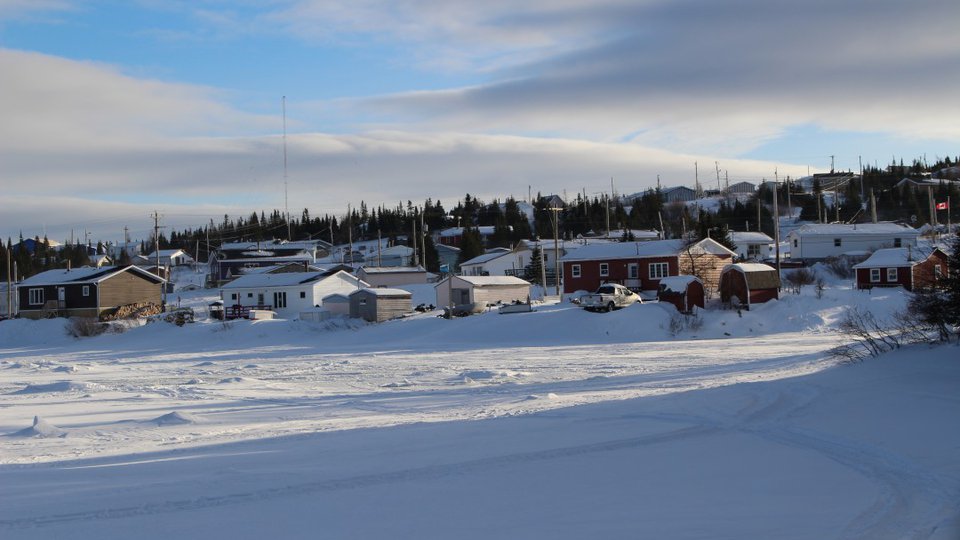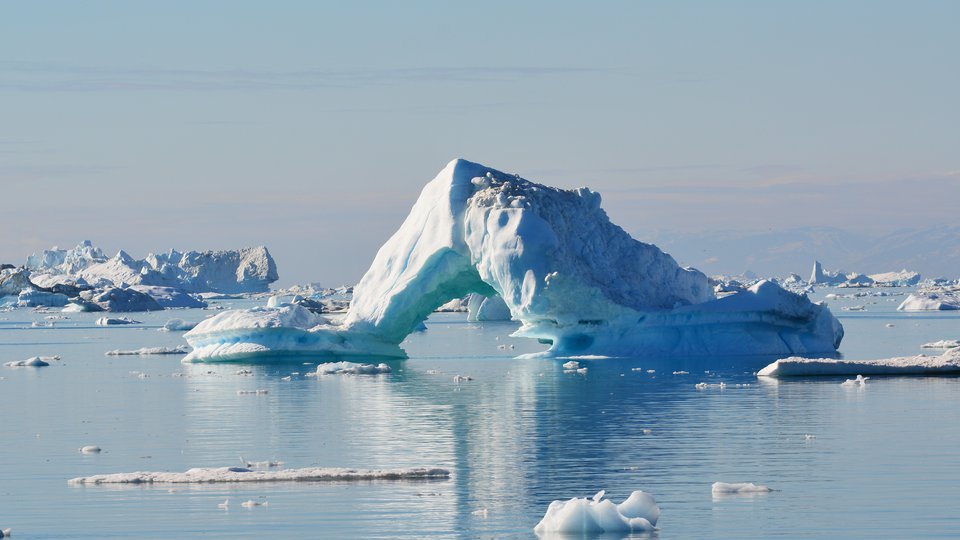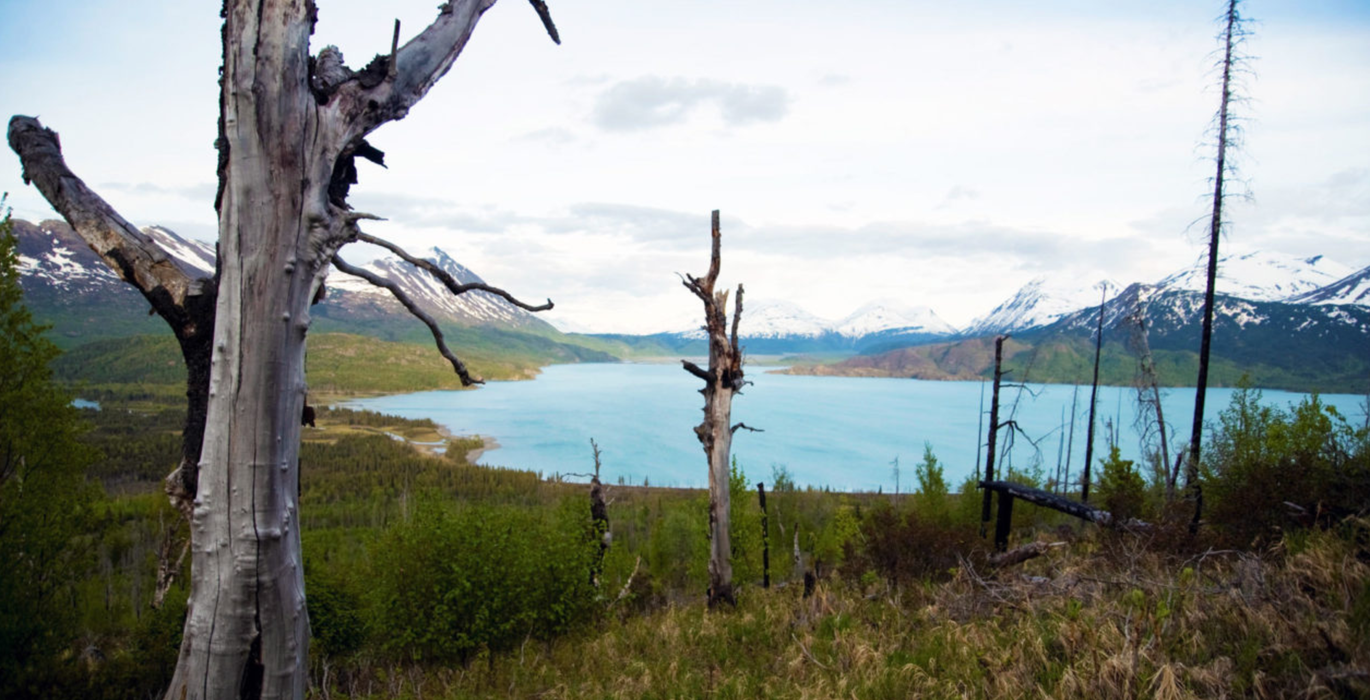
This article originally appeared in Yale Environment 360.
A few hours’ drive south of Anchorage, the Kenai National Wildlife Refuge is an Alaska in miniature. Larger than the state of Delaware, the refuge’s expanse includes snow-capped mountains, forests, lakes, vast wetland networks, and glacier-fed salmon streams that provide habitat to all of the state’s charismatic megafauna: grizzlies, black bear, moose, caribou, wolves, lynx, mountain goat, and bald eagles. First protected as moose habitat in 1941 by President Franklin Roosevelt, today the refuge remains a largely undeveloped, 2-million-acre wilderness that is a popular destination for angling, alpine hiking, paddling, camping, and hunting.
But like the rest of Alaska, which has warmed an average of 4 degrees Fahrenheit over the last 70 years — two to three times the U.S. average — the Kenai refuge is experiencing dramatic impacts from climate change. Rising temperatures and lower annual precipitation are making the region more susceptible to wildfires, which occur earlier in the season and now burn through wetlands and alpine tundra — habitats that used to serve as fire breaks. Over the last 50 years, the drop in precipitation has reduced the availability of water by 55 percent, resulting in smaller lakes and parched bogs.
Glaciers are thinning and shrinking, and salmon streams — which fuel lucrative commercial and sport fisheries — are heating up to the limits of fish survival. Trees and shrubs are invading alpine tundra at a rate of up to 10 feet per year, and woody plants are barging in on ancient peat bogs. Warming temperatures also have fueled successive outbreaks of spruce bark beetles that razed the region’s forests. And a native grass species — Calamagrostis canadensis, called bluejoint — is colonizing the ravaged forests and appears to be choking out trees and shrubs. Researchers forecast that by the end of the century, these grasslands might replace all of the refuge’s boreal woodlands.
A key question is, what does conservation mean in the face of rapid change?
For land managers and scientists such as John Morton, who served as the Kenai refuge’s supervisory biologist from 2002 to 2019, these ecological shifts raise tough questions. Chief among them: What does conservation mean in the face of rapid change?
As Morton witnessed the transformation of the Kenai reserve and realized that profound ecological change was inevitable, he began to see that scientists and managers might need to play an active role in directing change to meet conservation goals. “We know we’re going to experience mass extinction,” he says. “We have to do something different.”
So Morton and his refuge colleagues, including landscape ecologist Dawn Magness, have advocated a hands-on approach to adapt and respond to environmental changes. In some cases, this means working to maintain historical conditions despite climate change impacts. In other cases, managers will simply do nothing. But sometimes they’ll try to influence the ecological shifts in order to promote a desired future outcome. Among the steps they are considering are the introduction of bison to promote biodiversity in emerging grassland ecosystems and transplanting lodgepole pine, which fares better in warmer climates.
These scientists and their colleagues at the U.S. Fish and Wildlife Service and other federal agencies have started using the “RAD” approach, a decision-making framework that recognizes climate change adaptation as a process of either resisting change, accepting change, or directing change. The tough choices facing the Kenai refuge are indicative of what public land managers are dealing with across the country, where climate change has wrought challenges including extinction risks, emerging pathogens, exotic invasions, disappearing habitat, and catastrophic flooding.
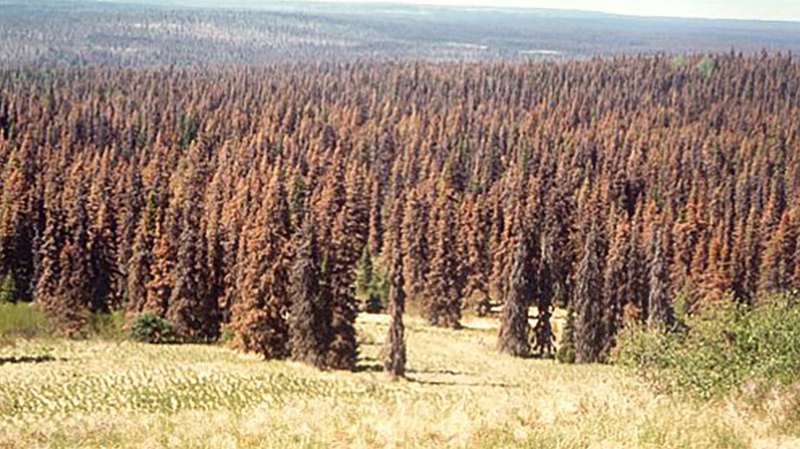
Spruce trees browning from a bark beetle infestation in the late 1980s/early 1990s in the Kenai refuge. (Photo: John Morton)
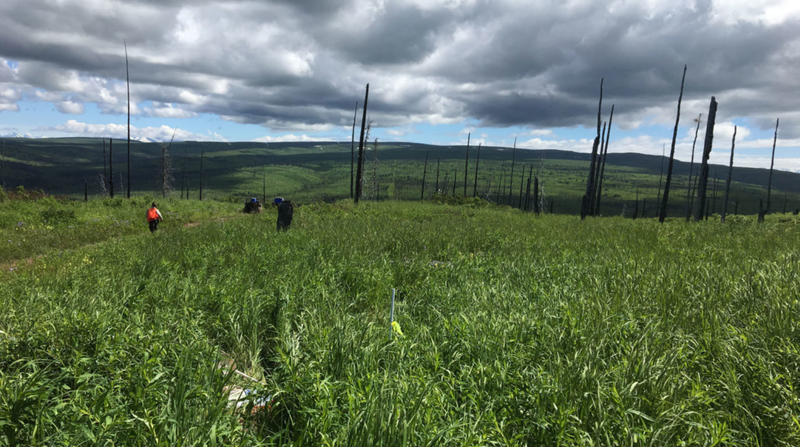
Today, that same area of the refuge is covered in grassland. (Photo: John Morton)
Some ecologists and biologists, however, warn of the unforeseen consequences of taking a more aggressive approach that seeks to introduce new species or manipulate landscapes. “At best, it’s a Band-Aid,” because we can’t recreate an entire ecosystem in a new location, says Daniel Simberloff, a biologist at the University of Tennessee who has spent nearly three decades studying invasive species.
But steps are already being taken — across the country and internationally — to shape landscapes as a way to promote conservation in response to climate change. At the Blackwater National Wildlife Refuge on Maryland’s Eastern Shore, for example, rising sea levels have claimed more than 5,000 acres of tidal marshes since the refuge was established in the 1930’s, and will likely drown the refuge’s remaining marshes by the end of the century. To ensure availability of this crucial habitat to birds and other wildlife, scientists, land managers, and conservation groups are encouraging the migration of marshes to higher ground by securing conservation easements from private landowners, removing dead and dying trees from newly flooded areas, and seeding salt-tolerant plants such as switchgrass to ease the ecological transition of sodden lands to marsh.
For nearly a decade, the U.S. Forest Service has prompted forest managers across the country to incorporate climate change adaptation in their decisions. In Wisconsin, these efforts include moving tree species north, as well as reducing beaver habitat to allow undammed streams to run cooler. In Missouri, tactics include removing tree species already stressed by climate change and those predicted to do poorly in future climate scenarios, such as black and scarlet oak. The National Park Service, likewise, recognizes the need for an active response to climate change, taking actions such as moving bull trout upstream to cooler headwaters in Glacier National Park.
In Europe, ecologist Chris Thomas has proposed assisted migration — moving species beyond their historic ranges to maintain their wild populations and help preserve global biodiversity. Among the possible candidates he has identified are the Iberian lynx, the Spanish imperial eagle, and the Pyrenean desman — a semi-aquatic mole-like animal.
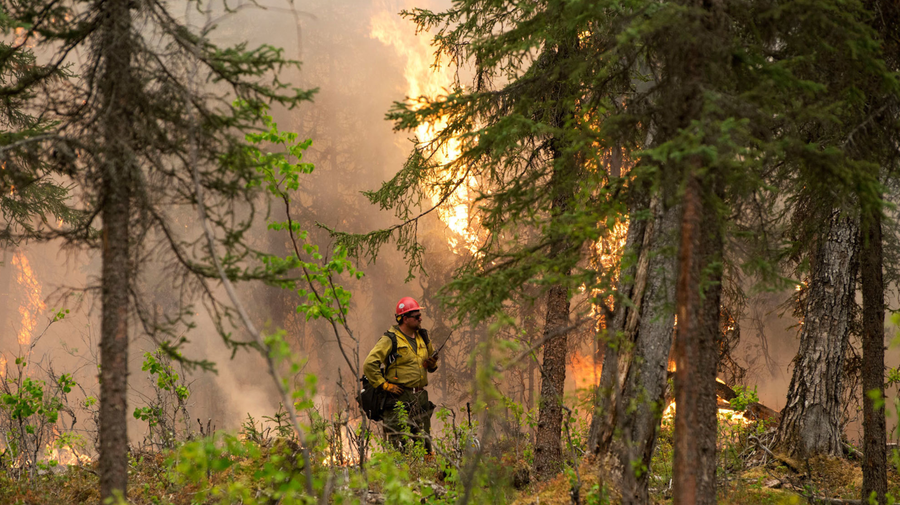
A firefighter stands at the edge of a 2014 fire that burned nearly 200,000 acres of the Kenai refuge. Fire seasons in the refuge are lasting longer and becoming more intense. (Photo: USFWS)
At the Kenai refuge, Morton saw over the last two decades how a warming climate was driving just about everything in the region, from increases in lightning strikes to different animals being captured by trappers. He realized it made sense to consider bold measures in response to the rapid changes.
With boreal forests giving way to grasslands, Morton understood that new habitat suitable for new species would be opening up. But the remoteness of the region makes it unlikely that new species would arrive in the refuge of their own accord. Morton said that if managers didn’t intervene, a haphazard event would likely drive ecological change: “My argument is: Why don’t we take control of this? Why don’t we push this?”
One of the changes Morton has proposed is the introduction of bison. Up until about 20,000 years ago, steppe bison — a now-extinct species of these land mammals — roamed this area. Today, no native grazers exist on the refuge’s burgeoning grasslands, which in the southern part of the refuge have expanded nearly twenty-fold in recent decades. In the Lower 48 states, research has shown that the bison’s habits of patchy grazing and wallowing in damp spots create a more heterogeneous landscape that supports more species. Morton believes bison could, among other things, help improve diversity of the Kenai’s bluejoint grass monocultures.
Since Morton initiated the idea, work on the issue has been both theoretical and tangible. Refuge scientists are quantifying existing biodiversity of the grasslands. To date, they’ve identified at least 67 native arthropod species, providing crucial baseline data before any experimental steps are taken to see whether a novel species — bison or otherwise — might increase diversity. Researchers also are comparing species information from the refuge’s new grasslands with that from similar grasslands elsewhere to see what might be missing from this emerging ecosystem.
Lodgepole pine could be planted to try to tip expanding grasslands back to a forest ecosystem.
Bison aren’t the only species on the list of transplant prospects. Lodgepole pine, native to Canada’s Yukon Territory hundreds of miles to the east, already does well in experimental and ornamental plantings in the region, and could be planted to try to tip the grasslands back to a forest ecosystem. Black-tailed deer is another species that could be established on the refuge. Endemic to Southeast Alaska, they were transplanted to the Prince William Sound area — about 200 miles east — a century ago, and appear to be headed toward the refuge in the next decade or two even without additional assistance. With help from humans, deer could be more rapidly established on growing refuge grasslands, where their browsing would knock back trees and shrubs.
For a long time, Morton’s colleagues — especially those outside Alaska — were skeptical. “If [novel species] came of their own accord, nobody blinks an eye,” Morton said. “But if I say, ‘Let’s bring something in,’ they throttle me.”
Christa Mulder, an ecologist and invasive species researcher at the University of Alaska Fairbanks, urges caution with the idea of introduction of non-native species. Climate change, she explains, makes it harder to predict which organisms will become invasive, and how ecosystems will respond. In the face of ecosystem transformation on the Kenai, Mulder says she is open to the idea of bringing in novel species, especially from nearby regions. But, she adds, “we want to prevent things that are entirely different from coming in.”
The University of Tennessee’s Simberloff resists the notion that we’re surrounded by ecosystems so transformed by climate change that they can’t be restored to historical conditions. He advocates a conservation approach that seeks to return an ecosystem “to its own ecological trajectory before human impact.”
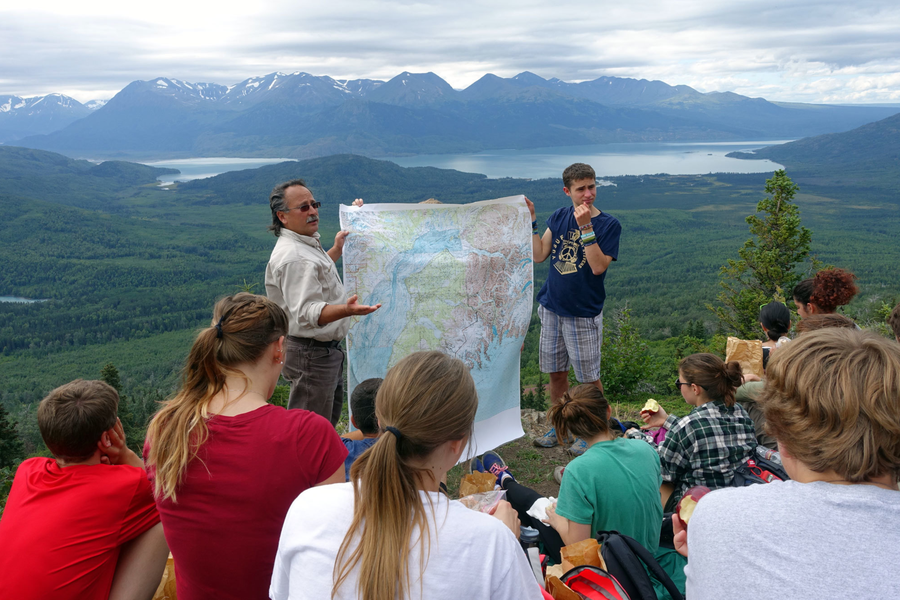
Former Kenai biologist John Morton talks to high school students about the impacts of climate change on the refuge. (Photo: John Morton)
As federal scientists discuss what actions to take in the Kenai refuge, private organizations and individuals are already taking steps to adapt to environmental change. The Ninilchik Natives Association, a large landowner in the vicinity of the refuge, planted thousands of acres of lodgepole pine following the spruce bark beetle epidemic, helping tip the scales to a new kind of forest. Two conservation groups in the area — Cook Inletkeeper and the Kachemak Heritage Land Trust — are working to identify and protect natural cold water seeps that help keep waterways, and salmon, cool. Other local residents are adapting to the changes by planting maple, oak, and apple trees that can now thrive in a warming Alaska.
Greg Encelewski, the president of the Ninilchik Natives Association, is wary of the idea of bringing in new species, even though he acknowledges that lodgepole pine in many cases seem better suited to the warmer, dryer conditions than native spruce. A 71-year-old Alaska Native of Dena’ina, Athabascan, and Aleut descent, Encelewski grew up in a small village not far from the refuge boundary where he and his family continued ancient subsistence traditions — fishing in the rivers, hunting moose in the woods, and digging clams on the beaches. Recent environmental changes have had profound impacts on this life. “We have no more king salmon,” he says. “The clamming is gone.” Moose are on the decline.
Encelewski says he has “mixed emotions” when it comes to bringing in new species. “A lot of times when man gets involved to enhance nature, it doesn’t always enhance,” he says. “I’m more in favor of using what God and nature gave us.”
Ultimately, says Magness of the Kenai refuge, when it comes to these tough conservation questions “there’s just no hard and fast rules. It’s about shaping the future in ways that make sense.”

